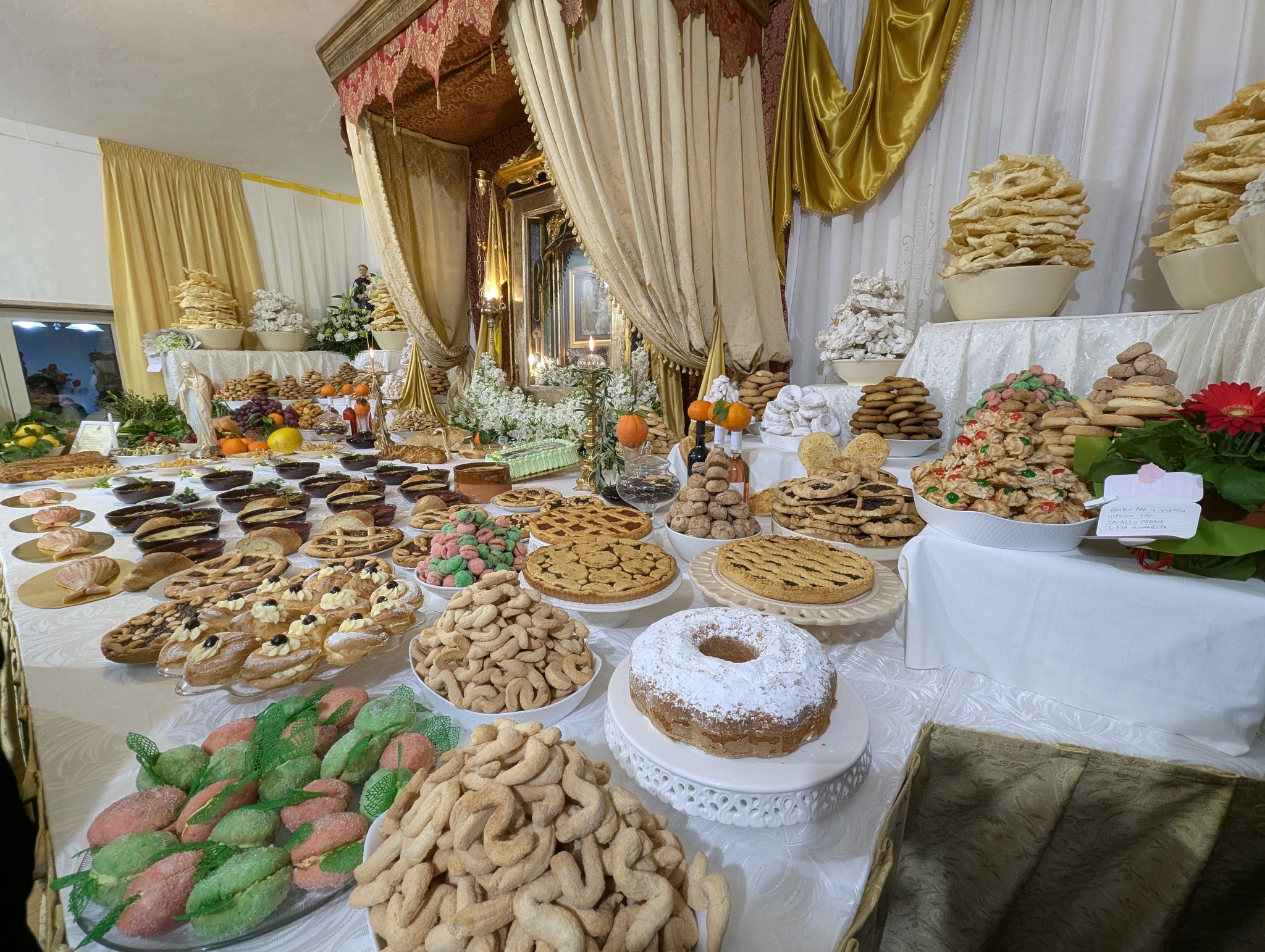In Puglia, and especially in Salento, from San Cassiano to Uggiano La Chiesa, from Minervino di Lecce to Poggiardo, the devotion tied to the figure of Saint Joseph is renewed. The devotion is expressed in many forms, often intertwining with food and ancient rural traditions, such as the Tavole di San Giuseppe (Tables of Saint Joseph). These are large ritual banquets, set up in homes or public places, with tables richly adorned with traditional foods. The meal is offered to special guests, who represent Saint Joseph, the Madonna, the Baby Jesus, and other saints, often played by members of the community. The tables can consist of a minimum of three up to a maximum of thirteen saints; however, they cannot be an even number. In addition to the three always-recurring "sacred" figures, others are added: Saint Anne and Saint Joachim (for the five-person table), Saint Elizabeth and Saint John (seven-person table); Saint Zacharias and Saint Mary Magdalene (nine-person table); Saint Catherine and Saint Thomas (eleven); and finally Saint Peter and Saint Agnes (thirteen-person table).
This rite symbolizes hospitality, charity, and Christian gratitude and is closely tied to the feast of Saint Joseph, which is celebrated on March 19th. It also evokes other rites of passage that serve as a bridge between the end of winter and the beginning of spring. The food, simple but abundant, includes legumes, homemade pasta, vegetables, bread decorated with sacred symbols, pittule, fish, and traditional sweets like zeppole but also cartellate. Since it is the period of Lent, meat is excluded from the banquets. Beyond the gastronomic aspect, the tradition holds strong spiritual and social value, promoting solidarity and sharing within the community.
Source: Il Quotidiano di Puglia


